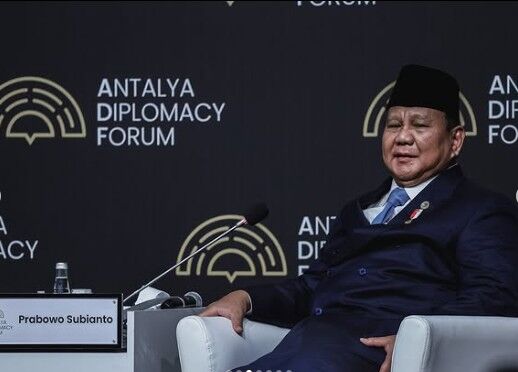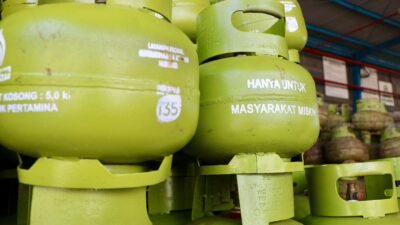Indonesia, as one of Southeast Asia’s largest economies, heavily relies on global trade and investments to fuel its growth. However, recent global economic shifts have posed significant risks to Indonesia’s economic stability. A double blow is looming on the horizon: the ongoing economic slowdown in China and the rising tariffs imposed by the United States. These two factors are expected to exert substantial pressure on Indonesia’s economic prospects. In this article, we will explore how these challenges are impacting Indonesia and what measures might be taken to navigate this storm.
1. The Economic Slowdown in China: A Major Concern for Indonesia
China, Indonesia’s largest trading partner, plays a pivotal role in driving Indonesia’s economic growth. However, the recent economic downturn in China has raised concerns for many countries, including Indonesia. As the Chinese economy slows, demand for raw materials, energy, and agricultural exports from Indonesia is diminishing.
China’s economic struggles have resulted in decreased industrial output, reduced consumer spending, and weakened demand for foreign goods. For Indonesia, this translates to lower exports, especially in key sectors such as coal, palm oil, and rubber. Moreover, China’s waning economic activity could also hinder foreign direct investments (FDIs) that typically flow from China into Southeast Asia.
The situation is particularly alarming for Indonesia as China has been a major consumer of Indonesian commodities. A prolonged slowdown could cause a ripple effect, leading to lower economic growth, job losses, and financial instability in the country.
2. U.S. Tariffs: Adding to Indonesia’s Economic Woes
The U.S., another key economic partner for Indonesia, has been implementing tariffs on various imported goods, including products from Indonesia. These tariffs are part of the broader trade war that has seen tensions escalate between the U.S. and several countries worldwide. For Indonesian businesses that rely on exporting goods to the U.S., these tariffs are causing financial strain.
Higher tariffs on Indonesian exports such as textiles, footwear, and electronics make Indonesian products less competitive in the U.S. market. As a result, Indonesia faces a shrinking export market in one of the world’s largest economies. Moreover, the imposition of U.S. tariffs can disrupt Indonesia’s trade balance, increase costs for consumers, and affect industries that depend on the U.S. market for their growth.
In addition, U.S. tariffs may have a cascading effect on other countries in the region, which could further undermine Indonesia’s trade prospects. Global trade uncertainties could lead to more protective measures from other economies, making it harder for Indonesian exporters to thrive in international markets.
3. A Combined Impact: The Two-Pronged Economic Strain
The combination of a weakening Chinese economy and increasing U.S. tariffs is creating a double-edged sword for Indonesia. While the Indonesian government has taken steps to diversify its export markets and promote domestic growth, the impact of these global economic forces remains significant. The decline in trade with China could reduce foreign exchange reserves and affect sectors like mining and agriculture, which are crucial to the national economy.
At the same time, the U.S. tariffs on Indonesian goods are likely to create a domino effect. Exporters may find it more difficult to sustain profits, leading to a reduction in production and potential job losses in affected industries. This economic strain could also lower Indonesia’s attractiveness as an investment destination, potentially slowing down the inflow of foreign investments that are needed to fuel growth.
4. Potential Solutions: Navigating the Economic Storm
Despite these challenges, Indonesia can take several steps to mitigate the effects of the economic slowdown in China and the impact of U.S. tariffs. First, Indonesia could look to diversify its trade partners further. Strengthening ties with countries in the European Union, Japan, and other emerging markets could provide more stability for Indonesian exports.
Additionally, investing in innovation and boosting competitiveness in sectors like technology, renewable energy, and digital trade could help Indonesia adapt to the changing global trade landscape. By focusing on creating high-value products and enhancing productivity, Indonesia can overcome the downturn in commodity demand and reduce its dependency on traditional export markets.
Furthermore, the government could explore ways to negotiate with the U.S. and China to alleviate trade barriers, as well as provide support to industries affected by tariffs. Policies that promote domestic consumption and stimulate economic activity would also be crucial in shielding Indonesia’s economy from external shocks.
Conclusion: Facing Global Economic Challenges
The combined impact of China’s economic slowdown and the rising tariffs from the U.S. presents a significant challenge for Indonesia. However, with strategic planning, diversification, and innovation, Indonesia has the potential to navigate these global economic storms and emerge stronger. While these challenges are daunting, they also offer opportunities for Indonesia to rethink its economic strategies and build a more resilient future for its people.
As the global economy continues to evolve, Indonesia’s ability to adapt to these changes will play a key role in determining its long-term success. By staying proactive and flexible, Indonesia can mitigate the risks and make the most of new opportunities in the international market.









